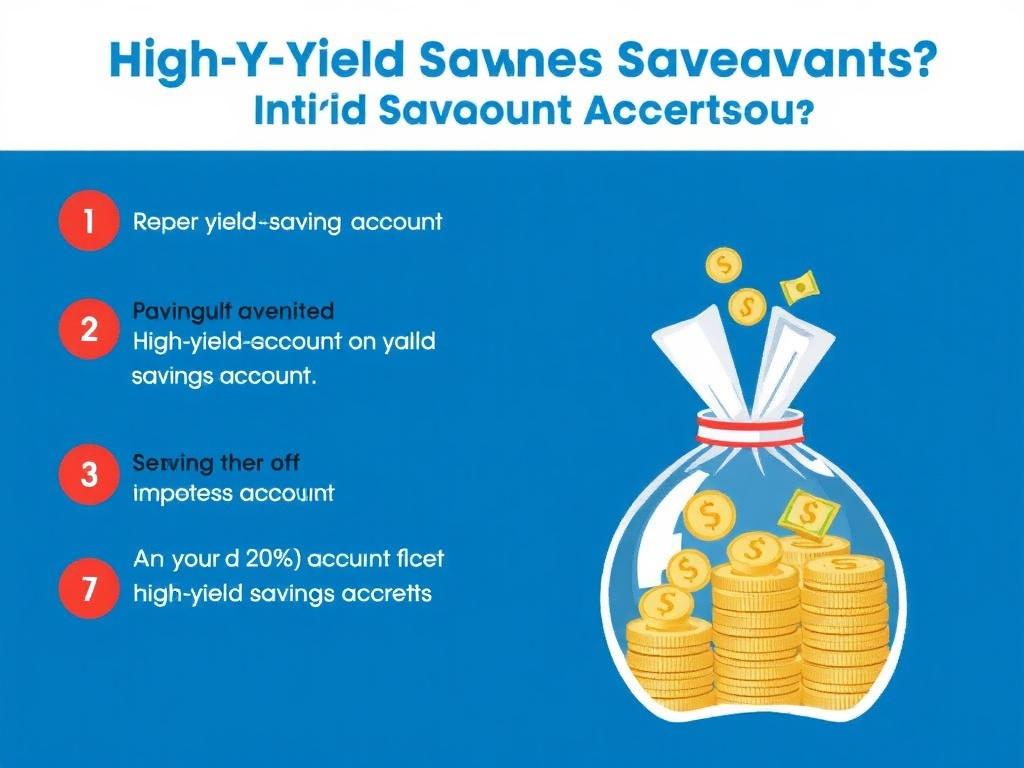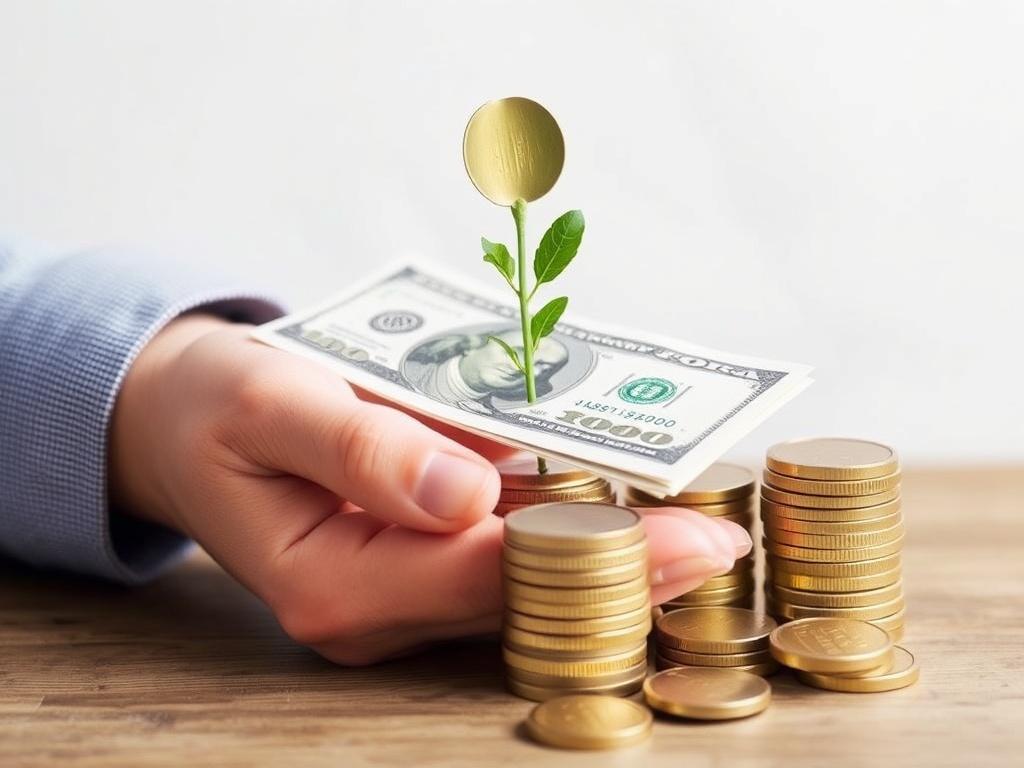SQLITE NOT INSTALLED
When it comes to saving money, most people think about the typical savings account offered by their local bank — the one with a low-interest rate that barely helps your balance grow. But have you ever heard of a high-yield savings account? These accounts have become increasingly popular because they offer much better interest rates, helping your money work harder for you. If you’re curious about what exactly a high-yield savings account is and why it might be a great option for you, read on. We’ll explore everything from the benefits to how they differ from regular savings accounts, and even some tips for choosing the best one.
Содержание
Understanding High-Yield Savings Accounts
A high-yield savings account is a type of deposit account provided by banks and credit unions that offers significantly higher interest rates compared to traditional savings accounts. The main appeal? The “high-yield” part means you earn more on every dollar you save. Instead of the typical 0.01% to 0.10% annual percentage yield (APY) many standard savings accounts offer, high-yield savings accounts have APYs ranging from around 1.00% to even 5% or more, depending on market conditions and the institution.
Why is this important? Imagine keeping $10,000 in a regular savings account with a 0.05% APY. You’d earn just about $5 in interest after one year. Place the same money in a high-yield savings account yielding 3%, and you could earn $300 instead. That difference can grow substantially over time, especially if you regularly boost your savings.
How Do High-Yield Savings Accounts Work?
At their core, these accounts function much like typical savings accounts: you deposit money, and the bank pays interest on your balance. The main difference is the interest rate. Institutions usually offer higher rates because many high-yield savings accounts are online-only, meaning the banks save money on physical branches and pass some of those savings onto customers.
Since they’re still savings accounts, your funds are generally very safe, especially if the bank is insured by the Federal Deposit Insurance Corporation (FDIC) in the United States or a similar agency in other countries. This means your money is insured up to $250,000 per depositor, per insured bank—offering peace of mind that your savings are secure.
Key Features of High-Yield Savings Accounts

Besides the obvious benefit of higher interest rates, these accounts often come with features that can make your saving experience more convenient and flexible. Here’s a quick rundown:
| Feature | Description | Benefit |
|---|---|---|
| Competitive APYs | Interest rates much higher than traditional savings accounts | Grow your savings faster |
| Online Access | Manage your account through a website or mobile app | Convenient 24/7 access to your money |
| FDIC or NCUA Insurance | Protection of deposits up to $250,000 | Security for your funds |
| Low or No Fees | Minimal maintenance or monthly fees | Keeps more money in your account |
| Minimum Deposit Requirements | Some require a small minimum initial deposit | Accessible even with modest savings |
High-Yield Savings Account vs. Regular Savings Account: What’s the Difference?
At first glance, a high-yield savings account might look just like a regular savings account with a fancy label. However, the differences go beyond just the interest rate. Let’s look closer at what really sets these accounts apart.
- Interest Rates: As mentioned, APYs for high-yield savings accounts are several times higher, meaning your money grows faster.
- Access Points: High-yield savings accounts are often offered by online banks without physical branches, while regular savings accounts are commonly linked to brick-and-mortar banks.
- Fees: Sometimes, regular savings accounts have monthly fees that can eat into your interest earnings, while many high-yield savings accounts boast low or no fees.
- Minimum Balance Requirements: Some high-yield accounts might require a minimum deposit or balance to earn the high rate, unlike basic savings accounts.
- Withdrawal Limits: Both types often follow federal rules limiting withdrawals to six per month, though recent regulatory changes may alter this.
Who Should Consider a High-Yield Savings Account?
High-yield savings accounts are suitable for anyone looking to maximize the interest earnings on their savings without taking any risk. They work great as a place to store emergency funds, save up for short-term goals like a vacation or a new car, or even as a supplement to longer-term investments.
Because these accounts offer easy access to funds, they’re not intended for long-term investments like retirement since stock market or bond investments usually yield more over many years. Instead, high-yield savings accounts are best when you want safety and liquidity along with decent growth.
Benefits of Using a High-Yield Savings Account
The benefits go beyond just the attractive interest rates. Let’s take a closer look at why opening a high-yield savings account might be a smart choice:
- Better Returns Without Risk: Unlike investing in stocks or mutual funds, there’s no risk of losing your principal. Your money grows steadily with guaranteed interest.
- Compounding Interest: Interest usually compounds daily or monthly, which means you earn interest on the interest already accrued, accelerating growth over time.
- Liquidity: You can usually transfer money to your checking account quickly, giving you easy access to your funds when needed.
- Low Maintenance: These accounts often require minimal effort to maintain, with no complex rules or investment decisions.
- Helps Curb Spending: Since the money isn’t as easily accessible as your checking account, it can help prevent impulsive spending.
Potential Downsides to Keep in Mind
While high-yield savings accounts offer many advantages, there are a few limitations and things to consider before opening one:
- Withdrawal Limits: Federal regulations (Regulation D) may limit certain transfers or withdrawals to six per month, and exceeding this can result in fees or account conversion.
- Variable Interest Rates: The APYs are often variable, meaning rates can change with market conditions, so there is no permanent guarantee of a high rate.
- Limited Additional Features: They usually don’t come with extras like checks or debit cards, since they’re intended primarily for saving.
- Minimum Balance Requirements: Some accounts require you to maintain a minimum balance to earn the advertised high rate or avoid fees.
How to Choose the Best High-Yield Savings Account

With so many financial institutions offering high-yield savings accounts today, it can feel overwhelming to pick the right one. Here are a few key factors to consider during your search:
- Interest Rate (APY): Look for the highest Annual Percentage Yield you can find, but keep in mind rates fluctuate.
- Fees: Choose accounts with no or low monthly maintenance and withdrawal fees.
- Minimum Deposit/Balance: Make sure you can meet the initial deposit and ongoing balance requirements.
- Access and Convenience: Check if the bank offers an easy-to-use online platform or mobile app.
- FDIC or NCUA Insurance: Confirm the institution is federally insured to protect your deposits.
- Customer Service: Read reviews and ratings to get a feel for the bank’s service quality.
Comparison Table: Popular High-Yield Savings Accounts
| Bank | APY | Minimum Deposit | Fees | Access Method |
|---|---|---|---|---|
| Ally Bank | 3.50% | $0 | No monthly fees | Online & Mobile |
| Marcus by Goldman Sachs | 3.75% | $0 | No fees | Online & Mobile |
| Discover Online Savings | 3.60% | $0 | No fees | Online & Mobile |
| Capital One 360 Savings | 3.40% | $0 | No fees | Online & Mobile |
Steps to Open a High-Yield Savings Account
Opening a high-yield savings account is generally straightforward. Here’s a simple step-by-step guide to get you started:
- Research: Compare different banks based on rates, fees, and user experience.
- Gather Documents: Prepare personal identification, Social Security number, and proof of address.
- Apply Online or In-Person: Fill out the application form and provide necessary documents.
- Fund the Account: Make an initial deposit via bank transfer, check, or other methods.
- Set Up Access: Create online accounts and download apps for easy management.
- Start Saving: Set up automatic transfers or contribute manually to grow your savings.
Tips to Maximize Your High-Yield Savings Account
Once your account is set up, here are some practical tips for making the most of your high-yield savings account:
- Automate Savings: Set up recurring transfers from your checking account to grow your balance effortlessly.
- Shop Around: Keep an eye on rates and consider switching if another bank offers better APYs.
- Use It for Goals: Designate this account for specific savings goals to keep motivation high.
- Limit Withdrawals: Avoid frequent withdrawals to keep your account in good standing and maximize interest.
- Monitor Account Fees: Stay informed on any fee changes or minimum balance requirements.
Frequently Asked Questions About High-Yield Savings Accounts
Is my money safe in a high-yield savings account?
Yes, as long as the bank is FDIC or NCUA insured, your deposits are protected up to $250,000 per depositor. This makes these accounts extremely safe for your savings.
Can I withdraw money anytime?
You typically have easy access to your funds, but regulations may limit certain types of withdrawals to six per month. Exceeding this can lead to fees or account restrictions.
Are high-yield savings accounts better than certificates of deposit (CDs)?
Both are safe savings options. CDs usually offer fixed, often higher rates but require you to lock your funds for a set term. High-yield savings accounts offer more liquidity with variable rates.
Do I need excellent credit to open a high-yield savings account?
No, savings accounts don’t require credit checks, so you can open one regardless of your credit score.
How often is interest paid?
Most banks compound interest daily and credit it to your account monthly, helping your balance grow steadily.
Common Misconceptions About High-Yield Savings Accounts
There are some myths and misunderstandings about these accounts that often deter people from opening one. Let’s clear a few up:
- “They are risky investments.” Unlike stocks or mutual funds, these accounts are safe and insured, making them no-risk.
- “You can’t access your money easily.” While there are some withdrawal limits, you generally have easy access to transfer your funds.
- “You need a lot of money to open one.” Many high-yield savings accounts require no minimum deposit to get started.
- “High rates never fluctuate.” Interest rates do change, but they tend to remain competitive as banks try to attract savers.
Conclusion
In a world where every penny counts, a high-yield savings account is an essential tool that can help you grow your savings more effectively and securely than traditional savings accounts. By offering higher interest rates, easy access, and minimal fees, these accounts provide a practical way to boost your financial health without taking on risk. Whether you are saving for an emergency fund, a big purchase, or just want your money to work a little harder, a high-yield savings account is an excellent option to explore. Remember to compare rates, understand the terms, and keep your savings goals in mind as you choose the best account to meet your needs. Your future self will thank you for making the smart choice today.
Опубликовано: 22 July 2025 Кредитрон – блог о кредитах, финансах и прочих реверансах
Кредитрон – блог о кредитах, финансах и прочих реверансах

